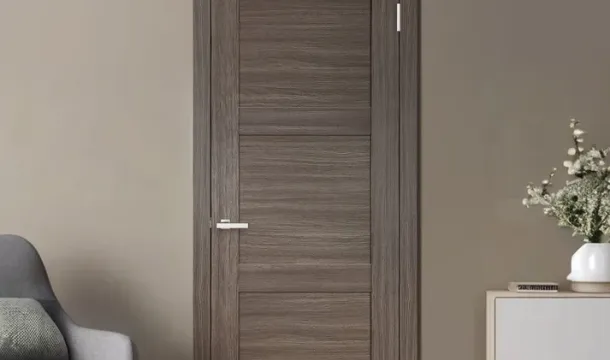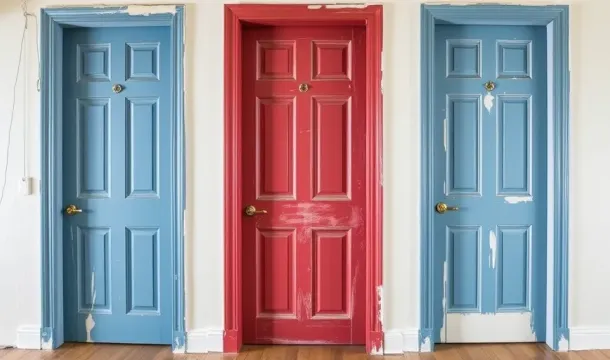How to Choose the Right Door Thickness for Your Home
Popular Articles
For superior installation and long-lasting durability, a door thickness of at least 1.75 inches is recommended. This measurement strikes a balance between strength and fit, ensuring that the entryway provides both security and aesthetic appeal.
When considering materials, solid wood or fiberglass options typically offer better insulation and resistance to wear compared to hollow-core alternatives. A thicker door made from high-quality material not only enhances energy efficiency but also contributes to overall safety by resisting forced entry.
Ultimately, assessing your specific needs and environmental factors will guide you in selecting the perfect door thickness. Prioritize strength without compromising on style to achieve an ideal blend of functionality and design in your residence.
Understanding Door Thickness Options
Select a thickness that complements your installation requirements and enhances durability. Common choices range from 1 3/8 inches to 1 3/4 inches, with the latter providing increased strength and insulation. Thicker materials generally offer better soundproofing and security, making them ideal for exterior applications.
- Installation Quality: Proper fitting during installation is crucial. Gaps around the frame can undermine the benefits of increased thickness, allowing drafts that waste energy.
- Durability and Strength: Thicker doors tend to be sturdier, which contributes to longevity. This reduces the frequency of replacements, indirectly impacting resource consumption over time.
A well-insulated entry can lead to significant savings on heating and cooling costs. Therefore, investing in a door with suitable thickness tailored to local climate conditions is wise for any homeowner aiming for greater energy efficiency.
- Consider regional climate when selecting material and thickness.
- Evaluate R-value ratings to determine insulation effectiveness.
- Assess potential energy savings through proper door selection and installation methods.
This strategic approach ensures an optimal balance of aesthetics, functionality, and sustainability in your living space.
Security Considerations Explained
Opt for a door with a minimum thickness of 1.75 inches to enhance security features. A thicker barrier provides greater resistance against forced entry, making it more challenging for intruders to breach your home.
Select materials known for strength, such as solid wood or steel, which offer superior durability compared to hollow-core alternatives. These options not only increase the physical robustness of the entrance but also deter potential break-ins.
Consider reinforcing hardware, like deadbolts and high-security locks, which are more effective when paired with thicker barriers. The combination of sturdy material and robust locking mechanisms significantly boosts overall protection.
Ensure proper installation; even the best thickness can be compromised by poor fitting. Gaps between the frame and barrier may create vulnerabilities that can be exploited. Always consult professionals for precise measurements and fitting.
A well-chosen thickness not only fortifies safety but also contributes to peace of mind, allowing homeowners to feel secure in their living spaces.
Noise Reduction Benefits
Selecting a door with adequate thickness significantly enhances noise reduction in residential spaces. A thicker barrier provides superior sound insulation, minimizing disturbances from outside or between rooms.
When assessing materials, solid wood and fiberglass options tend to outperform hollow-core alternatives in terms of soundproofing. The density and structure of these materials absorb sound waves more effectively, creating a quieter environment within your abode.
Installation plays a crucial role as well; ensuring a precise fit minimizes gaps that could allow noise infiltration. Proper sealing around edges further enhances acoustic performance.
Consider the following table for an overview of how different materials and thicknesses impact sound attenuation:
Selecting a thicker door crafted from dense material not only boosts durability but also markedly improves comfort by reducing unwanted noise levels throughout your living space.
Cost vs. Value Analysis
Prioritize durability when assessing material options for a new entryway. A thicker barrier often equates to increased strength and longevity, justifying higher initial costs. For instance, solid wood or fiberglass choices may demand greater investment but provide enhanced performance over time.
Evaluate the return on investment (ROI) associated with various thicknesses. Thicker constructions not only improve security but also contribute to energy savings by minimizing drafts. This can lead to lower heating and cooling expenses, making them a financially sound decision in the long term.
Consider installation costs as well. Heavier materials may necessitate professional installation, adding to the upfront expenditure. However, this investment can result in better fitting and functionality, reducing future repair needs and ensuring optimal energy efficiency.
Assess personal values alongside budget constraints. If aesthetics and acoustic insulation are priorities, investing in thicker options may yield significant satisfaction and comfort within your living space, enhancing overall quality of life.
In summary, weigh initial costs against long-term benefits carefully. Aim for a balance that aligns with both financial capacity and desired home attributes while ensuring that selected materials meet strength and durability requirements.
Popular Articles

Choosing the Perfect Interior Doors for Your Canadian Home

A Complete Guide to Choosing Interior Doors for Canadian Homes
